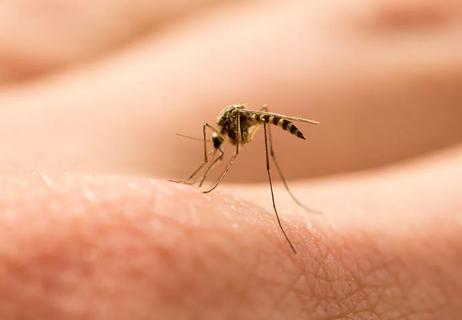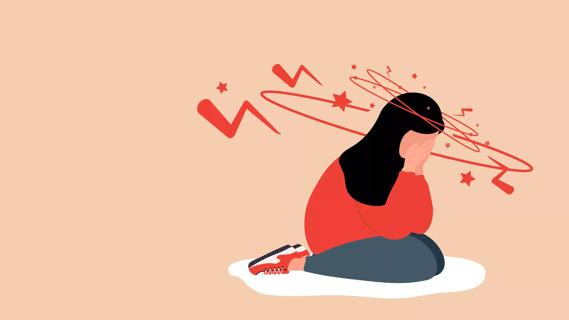Simple solutions to handle backyard encounters with some of nature’s smallest critters

Kids love to play outdoors. Know what else hangs out in backyards, woodlands and fields? Creepy crawlies that bite and sting.
Advertisement
Cleveland Clinic is a non-profit academic medical center. Advertising on our site helps support our mission. We do not endorse non-Cleveland Clinic products or services. Policy
If your child gets stung or bitten by a bug, you want to make them feel better as soon as possible. A hug, some tear-drying and a little soap and water are enough to address most situations.
But if those simple steps don’t take care of the problem, emergency medicine physician Baruch Fertel, MD, has some suggestions on what to do next. Let’s look at the “owie” moments one by one.
For starters, let’s not blame bees for every sting. The who-done-it list also may include wasps, hornets, yellow jackets and other winged insects with stingers and occasional anger management issues.
If your child is stung by any of these suspects, expect a few tears, as well as pain, itchiness, redness and swelling around the site of the sting, says Dr. Fertel. Symptoms often last for a day or two.
It’s not unusual for signs of irritation to extend across a wider area, too. (A sting near an ankle can lead to swelling up the leg, for instance.)
Follow these treatment steps if your little one gets stung:
Advertisement
In rare cases, bee stings may lead to anaphylaxis, a severe allergic reaction that demands immediate emergency treatment. Signs of an allergic reaction include:
If your child has allergies to other things (such as pollen and dust) or has asthma, it might be worth talking to your pediatrician about allergy testing during bee season. Children with bee sting allergies may be prescribed an EpiPen® to use in case of a severe reaction to a sting.
Although quite annoying, mosquito bites are rarely serious. Itching, swelling and red lumps are typical. Welts may vary in size from barely noticeable to near softball-sized.
Encourage your kids NOT to scratch at the bites. Apply calamine lotion or hydrocortisone cream to help with itching if it’s an issue. An antihistamine also may be useful if your child is really feeling the urge to scratch (but consult your pediatrician first).
Mosquito bites can turn into a problem if kids refuse to leave them alone, says Dr. Fertel. A pro tip? Covering bites with a bandage can keep fingers off of the welts.
If an infection seems to arise, call your pediatrician. Signs of infection include:
Allergic reactions (including hives, throat swelling and wheezing) are rare but do require immediate attention.
It’s estimated that up to 15% of people are afraid of spiders. That may explain why spiders get a bad rap when it comes to bite blame. What most people call a “spider bite” is usually from another insect or other cause.
But spiders can bite. The good news? Most true spider bites are harmless and don’t require special treatment, says Dr. Fertel. Simply wash the area with soap and water and all should be well.
You can also apply an ice pack to numb the bite if it hurts. An age-appropriate dose of an over-the-counter pain medication may be useful, too.
But there are spider bites that can be more serious.
Bites from some arachnids, such as the black widow and brown recluse spiders, are of greater concern. These spiders are found mostly in the Western and Southern United States. Symptoms may include:
Call your pediatrician right away if your child has any of the above symptoms. If the bite is on your child’s arm or leg, elevate it while seeking medical advice. Allergic reactions are rare but require immediate attention.
Advertisement
Odds are you won’t just find a bite mark if a tick sinks its mouth of hooks into your child’s skin. Expect to find the tick, too.
If you discovera tick on your child, remove the pest immediately — and carefully — using a pair of tweezers, instructs Dr. Fertel. After removing the tick, clean the area with rubbing alcohol. You can also apply antibiotic ointment or calamine lotion to help with itching.
Make sure you remove the entire tick, including the head (which may be embedded in your child’s skin). Any part of the tick left behind can potentially cause Lyme disease, a condition that can cause joint pain and other symptoms.
Save the removed tick in a baggie or other container for potential testing in case your child develops signs of Lyme disease, which could include:
Contact your child’s pediatrician if a tick bite leads to the above symptoms. Treatment with antibiotics in the early part of Lyme disease is necessary to avoid the spread of infection to the joints, heart and nervous system.
On a side note, if you find one tick, make sure to check for others. Ticks travel quickly once on the body and like to hide in crevasses in the skin, such as armpits or the folds of the groin area. (Learn tips to prevent tick bites.)
Advertisement
Can bug bites or stings be serious? Yes … but that’s not usually the case, states Dr. Fertel. Typically, bites and stings are just a source of temporary discomfort with no lasting issues needing medical attention.
Chances are good that it won’t be long before your kid is back outside running around like nothing ever happened.
Advertisement
Learn more about our editorial process.
Advertisement

Keep pesky bugs at bay by covering your skin, avoiding perfumes and using insect repellant

Bleeding is a risk and warrants taking care, but the reward of this lifesaving medication is great

Severe and debilitating headaches can affect the quality of your child’s life

With repeat injections over time, you may be able to slow the development of new wrinkles

Although it can be alarming, it’s normal to experience blood clots during menstruation

Type 2 diabetes isn’t inevitable with these dietary changes

Applying a hot or cold compress can help with pain